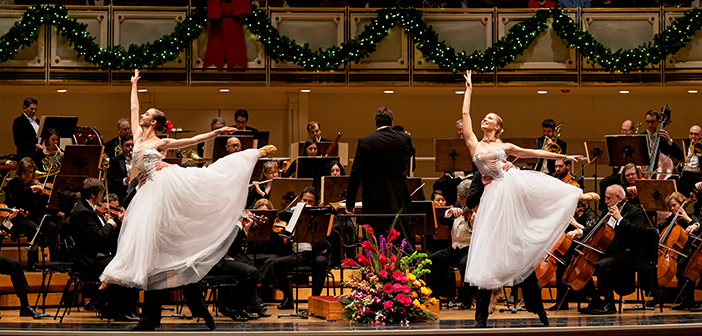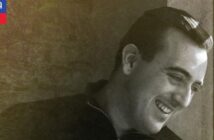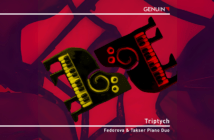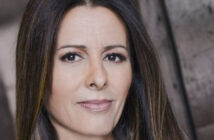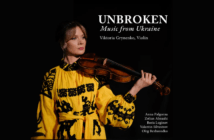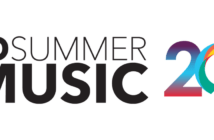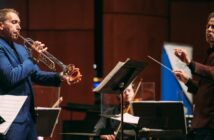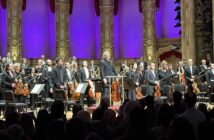Since its inception in 1995, Salute to Vienna, now in its 28th year, has become a must-see on New Year’s Day for music lovers, especially those still have enough energy to go out after a night of revelries. It’s the North American version of the Wiener Neujahrskonzert in the Musikverein.
I have attended events at the Musikverein a few times, and that venue is magical. That said, the Neujahrskonzert is absolutely the hottest ticket in town and near impossible to purchase. With top prices of 1300 Euros – if not bought from scalpers, that is – it’s beyond reach of most mortals.
I, for one, think it’s wonderful to have a North American version. Salute to Vienna is the brainchild of Hungarian Canadian impresario duo Attila and Marion Glatz, presented in many major cities in Canada and the U.S. This year, I counted 19 cities in total, slightly down from previous years, in cities such as New York, Washington, Chicago, Los Angeles in the States, and Hamilton, Montreal, Quebec City, New Brunswick, Edmonton, Calgary, and Vancouver in Canada.
Cancelled in 2021 due to the COVID-19 pandemic, Salute made a triumphal if tentative return a year ago, on January 1, 2023, with all the necessary health precautions in place. This time around, it was a more relaxed affair – I spotted only a few audience members donning masks. With this year’s concert, it was good to see attendance back to the normal full house.
Having attended Salute concerts most years since the mid 2000’s, I must say I can’t think of a better way to musically usher in the new year. I always arrive early, mainly to avoid traffic tie-ups, but also to get my fill of people-watching. There are always lots of older folks at a matinee who would otherwise be reluctant to venture out to an evening show. As usual, I spotted plenty of canes, walkers, and even the occasional wheelchair. Kudos to the older music lovers for making the effort to attend. It’s a real testament to the power of great music.
When it comes to programming, it’s best described as “long on Old World Charm.” Schmaltzy, formulaic and predictable? Yes, it’s all those things, but it’s also an immensely successful formula: a time tested, felicitous mix of well known waltzes, famous operetta arias, classical and ballroom dancing. And let’s not forget another essential – plenty of bantering from the Maestro. It’s a feel-good show all round, one that leaves the audience humming as they go home.
The Strauss Symphony of Canada is a pick-up orchestra made up of professional musicians, many of them doing side gigs in addition to their regular ensembles. Hungarian conductor Imre Kollár got things rolling with a high energy rendition of the overture to Die Fledermaus, always a great opening piece that introduces excitement and anticipation for the rest of the afternoon. True to its name, the Strauss Symphony stuck mostly to the music of Johann Jr., with a sprinkling of Emmerich Kalman and a lone Lehar.
The two soloists were Croatian soprano Tamara Ivaniš, who was deputizing for the originally announced yet indisposed Katharina Ruckgaber, and Austrian baritone Thomas Weinhappel. Ivaniš possesses a lovely, well focused lyric soprano with fine agility. She was excellent in Adele’s Laughing Song “Mein Herr Marquis” and in the lively “Heia in den Bergen” from Kalman’s Die Csárdásfürstin, although no twirling around the stage à la Anna Netrebko for her…
Somehow the name of the baritone rang a bell. A quick check and sure enough: Weinhappel sang in the 2018 Salute to Vienna in Toronto! Six years ago, I was impressed by his warmly attractive and virile baritone. He remains terrific this time around, with great stage presence and perfect comedic timing. He sang the same aria, Eisenstein’s “Da geh’ech zu Maxim” from Die lustige Witwe, looking ever inch the dandy that’s Danilo. Weinhappel and Ivaniš sang two duets, from Wiener Blut and Die Csárdásfürstin, sounding great, with no hint that it was the result of a last-minute cast change.
This show is as famous for its dancing as for singing, and we got two troupes: the Budapest Dance Ensemble and the Champion Ballroom Dancers. These young dancers were all attractive, fleet of foot, and all about the same size, as if they were made from the same cookie cutter. Wonderfully entertaining numbers, and in the case of the women, the ever present, obligatory and perpetual smile. A special surface was laid down on the stage for them, although like in previous years, none of the women danced en pointe.
With enormous speakers on either side of the stage, it was obvious amplification was used. Tiny microphones were discreetly taped to the right cheeks of the singers, making them sound huge. While amplification is verboten in opera houses, these gala shows are generally an exception, although no amplification was used in Bravissimo the previous evening. In all fairness, the amplification system was amazing, with the voices sounding totally free of distortion.
I save my comments on the conductor for last. Of all the Salutes to Vienna I have attended over the years, Imre Kollar wins the prize as the Maestro with the Most – comedic shenanigans that is! All good natured of course, and there was considerable laughter from the audience. The encores, as usual, were the Blue Danube Waltz, followed by the obligatory Auld Lang Syne, and ended with a rousing Radetzky March. A perfect winter tonic, and the audience went home happy.
On that note, I wish all La Scena Musicale readers a happy, healthy, and musical 2024!
Roy Thomson Hall
Works by Johann Strauss Jr., Franz Lehar, and Emmerich Kalman
Tamara Ivaniš, soprano; Thomas Weinhappel, baritone Imre Kollar, conductor
Strauss Symphony of Canada, Budapest Dance Ensemble & Champion Ballroom Dancers
January 1, 2024

